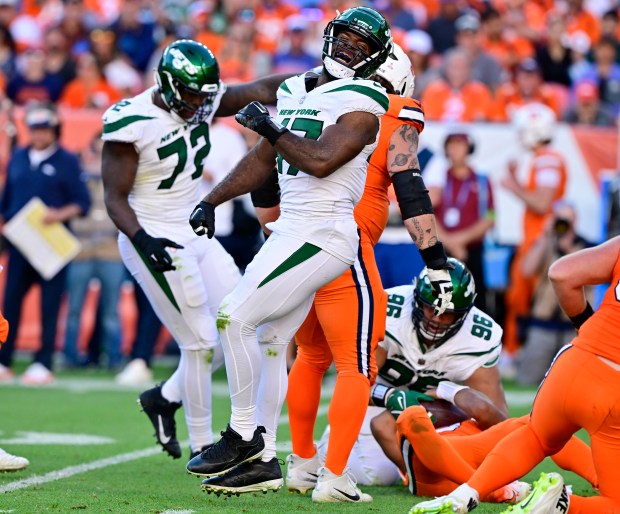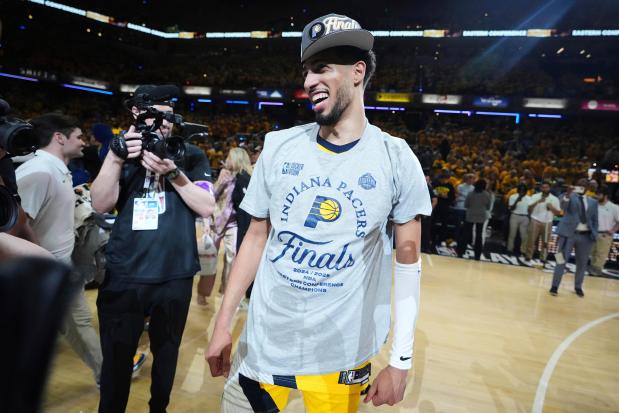If the Chicago Bears are going to be aggressive in free agency, the options appear pretty defined after adding two starters in the last week and paying cornerback Jaylon Johnson.
The negotiating window opens at 11 a.m. Monday and leads into the start of free agency when the new league year begins at 3 p.m. Wednesday. The work general manager Ryan Poles has completed in advance provides some clues for what could be next.
The Bears filled their hole at free safety Sunday when they agreed to terms with former All-Pro Kevin Byard on a two-year contract. He replaces Eddie Jackson, who was released on Feb. 15.
There was a glut of experienced safeties on the market — the Philadelphia Eagles cut Byard on March 1 — and this allowed Poles, coach Matt Eberflus and their staffs to sort through options before free agency.
Last week the Bears agreed to trade a fifth-round pick to the Buffalo Bills for center Ryan Bates. The big move, though, was a four-year, $76 million contract for Johnson, keeping in place an ascending player in his prime.
Poles has the freedom to shop as he desires in free agency. After the deal with Johnson and the trade for Bates, which will become official Wednesday after he takes a physical, the Bears were down to a little less than $50 million in effective salary-cap space, according to overthecap.com. How they structure Byard’s contract — reportedly for $15 million over two years — will affect that number.
Here’s where it gets interesting: With Bates earning $4 million this season and Byard playing for about half of the $14 million Jackson was scheduled to earn in 2024, where could the Bears really spend after paying Johnson?
The mind runs wild with possibilities. Resources are left for positions considered more of a premium than safety or center.
First, consider where the Bears need help: Quarterback, wide receiver, edge rusher, three-technique defensive tackle, backup tight end and possibly running back.
With the first and ninth picks in the draft, the Bears can choose USC quarterback Caleb Williams at No. 1 and consider a wide receiver, offensive tackle or defensive lineman with their next pick.
It’s a stacked draft for receivers, so if the Bears are in the market for a free-agent wideout, it likely would be for a No. 3 option. Backup tight end isn’t an area where they would spend big. That leaves a three-technique tackle such as Christian Wilkins of the Miami Dolphins or a defensive end as the Bears seek more speed off the edge.
Wilkins will benefit from the 13% spike in the salary cap this year and the four-year, $98 million contract Justin Madubuike received last week from the Baltimore Ravens. It’s easy to imagine Wilkins pushing for more than that on the open market, maybe $25 million per year. Wilkins is coming off a nine-sack season in Miami and is adept at stopping the run. Paired next to Gervon Dexter, the Bears could remake their front.
If that’s too rich for the Bears considering their investment in defensive end Montez Sweat, there are talented edge rushers who should be available for less. Bryce Huff of the New York Jets or Jonathan Greenard of the Houston Texans likely would excel opposite Sweat. Huff broke out with 10 sacks last season and Greenard had 12 1/2.
It’s important to consider the defensive front when understanding Poles’ background and that of assistant GM Ian Cunningham. The Kansas City Chiefs offense dominates media attention and quarterback Patrick Mahomes is a huge reason, but the Chiefs are sixth in the NFL in sacks since 2019 because they always invest in their front.
The Eagles, where Cunningham came from, rank third in that stretch and always have waves of talented linemen. The Bears, by the way, are 28th in sacks over the last five seasons.
In a scenario in which the Bears buy a big-ticket defensive lineman, they could narrow their focus for the No. 9 pick to wide receiver and offensive tackle, another position that is stacked with draft talent.
Running back looms as an interesting option. The Bears could lean on Roschon Johnson, whom Poles called his favorite player from last year’s draft class, and mix in Khalil Herbert and a low-budget addition. Herbert’s inconsistency in pass protection remains an issue and there is some thought the team could go luxury shopping here.
Two league sources linked the Bears to Saquon Barkley of the New York Giants, and if they’re indeed sniffing around on him, it stands to reason they would explore Josh Jacobs of the Las Vegas Raiders as well. Both are rugged runners with the ability to catch the ball out of the backfield.
It’s not a great draft for running backs and the Bears are limited in draft capital after the two first-round picks. It’s possible Poles and his staff might view paying a running back north of $10 million a season a worthwhile move to help out a rookie quarterback.
“I’d be a little surprised,” said a personnel director for one team. “But they have cap space and ultimately what they need is good players.”
The Bears don’t want to blow through all of their cap space. They need to be prudent considering they’ll have more of their own players like Johnson to pay in the future, with left guard Teven Jenkins a possibility down the line.
They do have holes to fill but feel like a young core is in place for a rookie quarterback to launch his career. Poles can spend on a player for the defensive front or a running back. Maybe there’s a chance for both, but this time of year it’s always easy to find reminders of how dangerous spending big in free agency can be.
It will happen fast. Most of the big deals fall into place during the negotiating window before free agency starts Wednesday.





